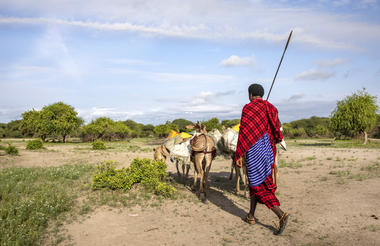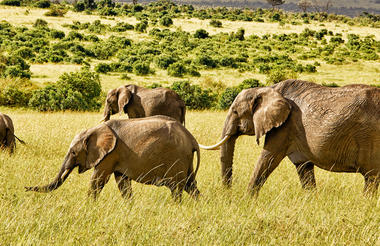Kenya is the most famous destination for safaris in the world for endless reasons, the scenery, the incredible opportunity for viewing all African wildlife in particular the ease in which to see the ‘Big 5’. It is still the best country for adventure travel in Africa; it offers high levels of service; it still offers 'Out of Africa' scenic beauty, diverse cultures and abundant wildlife.
Safari is however, by no means the only reason to visit Kenya, the coastline and tropical beaches are amongst the world’s most beautiful.
Name: The Republic of Kenya
Time Zone: GMT + 3
Capital City: Nairobi, meaning “place of cool waters” in the Maa language
Independence gained on: 12 December 1963 (from Great Britain)
National Language: Kiswahili
Official Language: English
Currency: Kenyan shilling (KES) and cents
Land Area: aprox.586,600km sq
Drives on the: Left
Country Code: + 254
Location
On the Equator on the eastern coast of Africa. Kenya is bordered by Tanzania to the south, Uganda to the west, Somalia and the Indian ocean to the east, Ethiopia to the north and Sudan to the northwest.
Population & People
The population is estimated at 43,500,000 as of 2013.
There are about 52 tribes in Kenya.
Vegetation & Special Natural Features
Kenya is home to the famous Masai Mara game reserve, Mount Kenya and Lake Victoria (the world's second-largest freshwater lake).
The Great Rift Valley, which runs from northern Syria in Southwest Asia to central Mozambique in East Africa, bisects the country from North to South and is dotted with lakes and extinct volcanoes, is one of Kenya's most fascinating physical features.
Kenya’s natural vegetation is diverse. Truly a ‘world within one country’. Tropical rainforests, sandy beaches, snow-capped mountains, desert, wide savannah plains teeming with wildlife, freshwater lakes and salt lakes.
Set against the backdrop of Mt Kenya, Laikipia offers dramatic rocky scenery, open grasslands, basalt hills and dense forests, it is indeed physically diverse and holds the second largest density of wildlife in Kenya after the Masai Mara!
The majority of the conservation occurs on privately and community owned ranches centered round the Laikipia National Reserve. Many of the ranches run cattle as well as wildlife safaris and you can experience conservation that includes, rather than excludes, people going about their day to day lives. Many of the lodges are family homes and despite this domesticity the wildlife includes spectacular game like lion, leopard, buffalo and elephant; as well as terribly rare species such as the black rhino and Grevy’s zebra.
The private lodges in this area offer amazing activities as well as the usual game drives and walks i.e. horse, camel & quad-bike riding; river-swimming and fishing, kayaking, honey collecting etc.
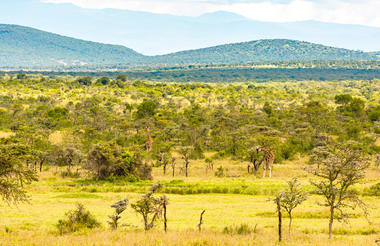
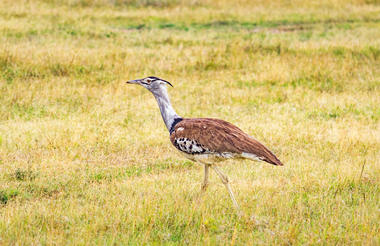
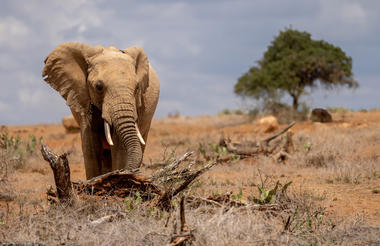
The Masai Mara together with Tanzania’s Serengeti form Africa’s most famous wildlife area. The image of acacia trees on an endless grass plain epitomises Africa for many, and then add a Masai warrior and some cattle to the picture and the conversation need go no further.
The annual wildebeest migration through the Serengeti and the Masai Mara is the largest mass movement of land mammals on the planet – with more than a million animals following the rains. But that is not where the game viewing ends; large prides of lions, elephants and giraffes in grasslands, gazelles and eland to mention but a few. Aside from traditional vehicle safaris, game walks and hot-air ballooning over the Mara plains has become almost essential.

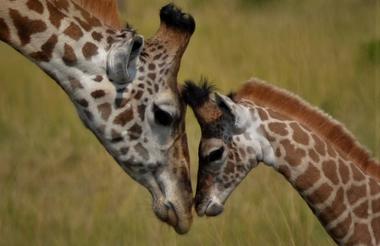

The Loita Hills area in Kenya’s Southern Rift Valley is one of the nation’s last frontiers of pristine, untouched wilderness. Rising to over 2000 metres, the hills cover an area of some 200 square kilometres and form an important part of the Maasai Mara Ecosystem. Patches of remote forest are flanked by wide open plains, and the hillsides are dotted with an abundant variety of wildlife. Visitors can hike with local Maasai guides and explore the magnificent forest, filled with cedar, Opodo, strangler figs, and see an impressive variety of birdlife. Buffalo, elephant, baboon, bushbuck, hyena, leopard, and over 2000 colobus monkeys have made their home here too. Gorgeous waterfalls add to the experience. The area is inaccessible to vehicles, making the landscapes here relatively untouched.

